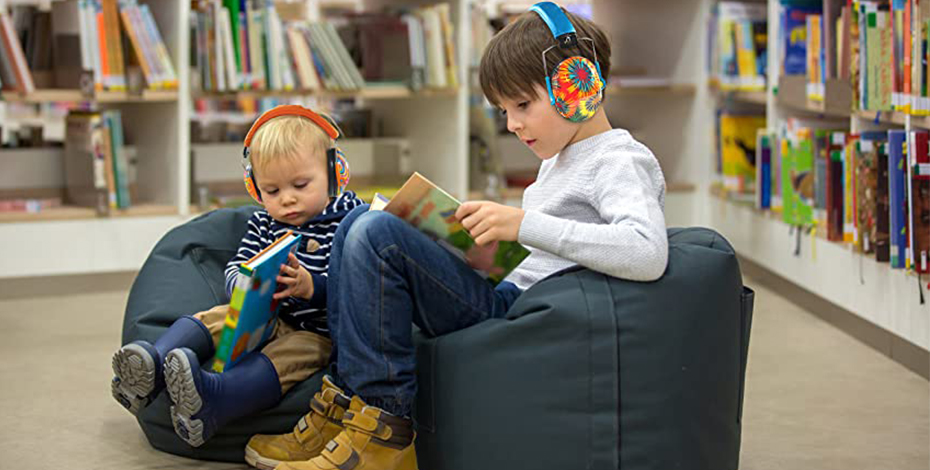Copyright Hangzhou ZH Tech Co.,LtdAll Rights Reserved. Powered by www.300.cn 浙ICP备19002797号-1
Thank you for your interest in ZH TECH,Our entire team appreciate it.
We are a professiaaaonal manufacturer and exporter of hearing protector in China in last 10 years and accept OEM.
Quick Links
About Us
Contact us
No. 6 Shunle Road, Yuhang Jingshan, Hangzhou
Email: sale@zh-safety.com
Phone +86 15888861058
FAQ
FAQ
How to Help Protect Your Child’s Hearing
Loud sounds are everywhere. About four in 10 young people have been around dangerously loud noises. But what noises are unsafe? Can you help protect your child from them? You can! Read on for information about noise-induced hearing loss (NIHL), and what you can do about it.
HOW NOISE-INDUCED HEARING LOSS CAN HAPPEN
The world is made up of many different sounds. Most sounds are safe for hearing, but some sounds can damage hearing if they are too loud or are loud enough for an extended amount of time.
When sounds become harmful to hearing, a person can develop noise-induced hearing loss. NIHL can happen at any age. More recently, it has become more common in children.
NIHL is permanent, but it can be prevented.
DANGEROUS VS. SAFE SOUND LEVELS
Sound is measured in decibels (dB). The series of decibels can range from negative numbers (soft sounds) to numbers over 100 (loud sounds). As the number of decibels grows, the sound gets louder.
Here are examples of various sounds and how soft or loud they typically are:
Birds chirping 30-40 dBA
Conversation 50-70 dBA
Movie theater 80-105 dBA
Gas lawn mower 90-110 dBA
Concert 90-120 dBA
Sirens 100-125 dBA
Fireworks 130-150 dBA
When loud sounds travel through the ear, they damage hair cells in the inner ear very quickly. This causes NIHL. Once these hair cells are damaged, they cannot repair themselves.
WHAT SOUNDS ARE HARMFUL TO HEARING?
Sounds are most likely to cause damage to hearing if:
They are loud sounds that happen over a certain amount of time. Example: Going to a concert.
One very loud sound or “impulse noise” takes place. Example: An explosion.
You take part in certain recreational activities. Examples: ATV riding, listening to music too loud with headphones, target shooting, playing in a band, attending loud events, or completing household chores such as mowing the lawn.
Sounds at 70 decibels (dBA) or lower are usually safe to listen to for any amount of time.
Sounds at 85 decibels (dBA) can lead to hearing loss if a child listens to them for more than 8 hours.
The louder the sound is, the less time you can listen to it safely. For example, listening to sounds at 90 dBA for a few hours will do the same damage as listening to sounds at 110 dBA for 2 minutes.

COMMON SYMPTOMS OF NIHL
These symptoms can happen gradually or suddenly.
Long-lasting hearing loss
Temporary hearing loss
Having a hard time understanding others
Ringing or clicking in the ears (called tinnitus)
4 WAYS TO PREVENT NOISE-INDUCED HEARING LOSS
Turn down the sound.
Walk away from the sound.
Limit the time spent with the sound.
Wear hearing protection.
KEEP NOISE DOWN AT HOME
Lower the volume of electronics to the softest volume that they can be heard clearly.
Find ways to make chores quieter, for example, close the doors between the laundry room and the rest of the house.
Buy quieter toys and be aware of the noise rating of toys.
When shopping for appliances, choose models that have a quieter noise rating.
Use soft furnishings indoors to soften noise, such as putting carpets over hard floors.
KEEP NOISE DOWN WHEN YOU’RE OUT AND ABOUT
If you’re with your kids in an area where there is loud noise (group of loud cars or motorcycles rides by), cover your ears and have your kids do the same.
Take earplugs for the whole family to loud events (a fireworks show, car race, or concert).
Take note of where speakers are set up at events, and avoid sitting or standing right next to them.
Talk to your kids about the damage loud sounds can cause. This is especially important as your children get older, start wearing earphones and enjoy turning up the music. (See our blog post on How to Listen to Earphones Safely.) Once noise-induced hearing loss happens, it can’t be reversed.
CHOOSING HEARING PROTECTION
Hearing protection helps protect children’s ears from loud sounds that can damage hearing. It lowers the loudness of sounds going into the ear, but does not totally block out sound. The most common types of hearing protection are earplugs, earmuffs and specially made devices.
Kids most often wear earmuffs to protect their hearing. Make sure they fit well. Hearing protection that does not fit properly will not protect your hearing.
Choose hearing protection that is comfortable and convenient – You’ll be more likely to wear hearing protection that is a good fit.
Be a role model – Children look up to adults and their actions. It is important that adults are consistent in how and when they wear their protectors.
Go shopping together – Children will be more excited to wear their hearing protection if they help pick out the style and color.
Set clear rules – Tell children the expectations for wearing hearing protection. Talk about the places where wearing hearing protection would be important.
Choose the right protection – Children may not want to wear their hearing protection if it makes it too difficult to hear other sounds around them.
Make sure hearing protection is ready to use – Wearing protection every time you are around the noise affects how well it works.







